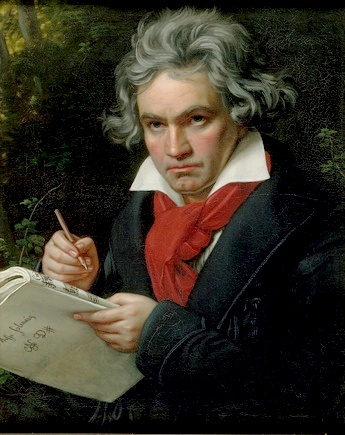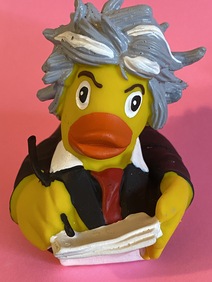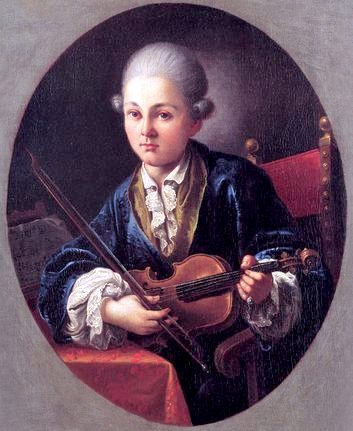File last modified:
Return to site main page, non-China resources page.
Etiquette at Classical Chamber Music Concerts
(Occasionally Asked Questions From Puzzled Students)
Universities often provide students with free or discounted tickets to on-campus chamber music concerts. Sometimes professors even require attendance or provide extra credit for attending. For some students, it is a first-time experience.
Here are answers to some of the questions you may have about classical chamber music concerts, based mostly on questions from earlier students who got caught off guard because their only prior concert experience was with (1) rock concerts and/or (2) younger siblings’ piano recitals and/or (3) neighbors singing in the shower.
- How come students sit in the back? Who are all the Ancient People sitting in the front?
- Front seats are more expensive than back seats. The Ancient People paid for their seats. When free or discounted tickets are made available for students, they are typically for the cheaper seats unless pricey front seats happen to remain unsold or were abandoned at the last minute by Ancient People unable to attend because of unforeseen aches and pains.
- The Ancient People are community members who like this kind of music (or figure that they ought to). Some of them also like students (or figure that they ought to) and are now or may eventually become donors to scholarship funds, so you love them. Think grandparents.
- Why do the Ancient People fail to applaud sometimes? Don’t they like the songs? Do they fall asleep?
- Symphonies and chamber music compositions (called “pieces” not “songs”) are normally divided into “movements” (also not “songs”), typically four in number, and typically with Italian names like allegro (“cheerfully”) and adagio (“slowly”).
- It is conventional to applaud only at the end of the entire composition, and never between the movements. Sometimes musicians will take advantage of the brief pause between the movements to adjust the tuning on their instruments if the tuning has slipped slightly during the previous movement. For the audience, the brief pause between movements is considered to be reserved for coughing and shuffling and looking at the program to see the name of the next movement, not for applause. It’s just Not Done.
Return to top.
- Does that mean it is embarrassingly gauche to applaud between movements?
-

Ludwig van Beethoven (1770-1827) in 1820 Painting by Joseph Karl Steiler
(Beethoven Haus, Bonn)
- Yes, clapping between movements is gauche. It is also a faux pas and various other bad things with French names, even though the convention is obviously a stupid one. Every year a couple of Ancient People turn around to glower at the between-movement clappers and mutter to each other about the moral deficiencies of Persons of Insufficient Antiquity. But most merely smile knowingly and feel vaguely superior (a feeling they may actually enjoy). A few write letters of complaint to the university after the concert.
- Professional musicians have seen it all and are usually unfazed (and perhaps bemused) by inter-movement applause. In fact, classical musicians who are used to performing at colleges are usually delighted when students attend at all, even if they are the sorts of students who clap between movements. Still, Not Done is Not Done. It’s better to save up the applause and release it all at once at the end of the whole piece.
- What happens if you lose count of the movements? How do you know when to clap?
- You wait till all the Ancient People clap, then you join in on the theory that the Ancient People know these things.
- If the concert is sufficiently boring and/or sufficiently weird, sometimes the entire audience gets confused and sits in stony silence waiting for somebody to indicate it is time to clap. It can happen that the confused silence goes on so long that an embarrassed musician finally stands up and bows, producing a wild storm of equally embarrassed applause. (In that case, you get to giggle a bit about the whole thing.)
- When time comes for applause, is it okay to holler and whistle and stomp or is applause limited to clapping hands?
-

Ludwig van Beethoven (1770-1827) as a Rubber Duckie
(Austroducks, Saltzburg)
- Stick with clapping. To holler and whistle and stomp is also Not Done. In eastern Europe, I am told, whistling is downright insulting, comparable to shouting “boo!”. In some parts of Europe rhythmic clapping by the whole audience suggests strong approval; it occurs in the United States but tends to be viewed (correctly) as a bit tacky for a concert hall. (Stomping is likely to be misconstrued as convulsions.) Note: Chamber music concerts do not make use of a mosh pit.
- How about shouting “bravo!”?
- The occasional enthusiast does do this now and then, although it never caught on very well in America. For one thing, in Italian bravo is masculine singular, so shouting it at a woman or at a group risks looking uneducated. (The feminine singular is brava. The feminine plural is brave. The masculine and mixed plural is bravi . But all that comes naturally only to Italians. In America one easily feels a bit silly being the only person in the room to shout “bravi”!) Most people confine themselves to clapping. If they are overcome with emotion because the music has just stirred their souls and transformed them forever, they sometimes stand up while clapping. More and more, American audiences stand up while clapping at the very end of a concert whether it stirred their souls or not.
- All that said, if a bunch of students shouted “bravi” while applauding wildly at the very end of a classical concert it would probably go down very well.
Return to top.
- Why is there no amplification? Doesn’t the university own a sound system?
- Classical music uses electricity only to illuminate music stands or pump air through pipe organs. Purists argue (correctly) that amplification distorts the sound of the instruments. There often are microphones on the stage. These may be for use by the musicians to review their performance afterward or make “in concert” CDs. Or they may be intended to show that the university also has non-classical concerts and it doesn’t trust student interns to get the sound stuff back right if it is taken down for chamber music.
- Non-amplification is conventional also in opera performances, by the way, even though it is a serious challenge for the human voice to be heard over the sound of the orchestra. In opera, as in politics, a loud voice wins over a sweet voice every time. (Actually, most of life is like that.)
- Why do all of the instruments in a string ensemble look like violins?
- They don’t all. Sometimes one of them looks like a piano.
- In some sense, most of them actually are violins. In most string quartets, the two on the left are violins (referred to as first and second violins). The one at the back is a cello, a kind of violin on steroids. And the one on the right is a viola, a violin on fewer steroids, so that it scarcely shows. Occasionally they are arrayed in different order, but these are the constant elements. With a bigger group, the numbers increase, but usually stringiness still prevails.
-

Wolfgang Mozart (1756-1791) in Unidentified Internet Painting
(Google & Friends)
- All these violin-like instruments produce their sound by resonating to the vibration of a string that is set in motion when it is rubbed with a horsehair bow (or occasionally plucked —which is called pizzicato, which is Italian for “plucked”). The pitch is controlled by pressing the string against the fingerboard to change its vibrating length. The body of the instrument must (1) be able to sustain the pressure of the taut strings, (2) allow room for the bow to change angle as it moves from one string to another, and (3) resonate satisfactorily. The optimal shape has been standardized for centuries. Some instruments used today were made a couple of hundred years ago. A very old violin is considered a good thing, not a piece of junk (unless it happens to have been a piece of junk from the beginning). Ever and anon an ambitious engineer invents an improved violin, but it never catches on.
Return to top.
- Why does the violinist in front get all the good parts?
- The party line is that there are no better or worse parts and that in a string ensemble all instruments make an equal contribution to a unified and glorious whole.
- In fact, most European music is written so the first violin gets the good parts. That is also why, in an orchestra, the first violinist is called the “concert master.” It’s just how it is.
- Wouldn’t a drum set improve things? How about a singer who takes his clothes off to show jailhouse tattoos?
- Maybe, but then that wouldn’t be a string ensemble, now, would it?! Or a chamber music concert.
- Notice that in this style of music, emphasis is placed on melody and resonance —strings have a sound quality produced by nothing else— and the timing is implied rather than being pounded out on a drum. In much popular music, lyrics and rhythm are very central, while melody is almost absent, and resonance is partly a function of electronic manipulation. That’s different. (Some would argue that it is also bad, but that is a separate discussion.)
- How come they add an extra song at the end? Can’t they read the program?

Wolfgang Mozart (1756-1791) as a Rubber Duckie
(Austroducks, Saltzburg)
- (Ahem: classical music comes in “pieces” and “movements,” not “songs.” Remember?)
- The piece (!) at the end is an encore (pronounced AHN-kor). It used to happen only if the audience applauded so extravagantly that the musicians felt “compelled” to offer something more. In the late XXth century an encore became relatively routine, and it was rare not to have one. In recent concerts I have attended, encores have become less frequent (and hence more special) again. Typically an encore piece is relatively short (and not divided into movements). Often it is a well known or popular piece within the general style of the rest of the concert. Sometimes there may be more than one encore.
- Are all the composers in such concerts dead white males?
- Usually, yes. European music tends toward that, although they weren’t dead at the time they wrote the music. However, check out the full season’s plan, available at the concert, or check the other campus arts listings for other styles of music, by other composers, including non-dead, non-white, non-males.
- How come the intermission is too short for the line at the women’s bathroom to disappear?
- 1. Women’s bathrooms rarely have enough … um … “workstations” to accommodate intermission demand, especially if the architect —nearly always male— was ordered to cut corners and save money. (At universities, since the beginning of human history, all architects have been so ordered.) Legislation mandating fairer accommodation generally resulted in reducing facilities for men, since that was cheaper than increasing them for women.
- 2. Intermissions have generally been getting shorter in recent years because venue staff are paid by the hour, and each extra minute of total performance time has a dollar price attached to it.
- Do students get discounted tickets to all classical music concerts?
- Not always, but often. If the university is going to spend all this money presenting these performances, it’d be a shame to have a lot of empty seats. (Besides, in a university the supply of Ancient People is limited, while there are students pretty much all over the place.)
Return to top.
There have been

visits to this page since 181102.





